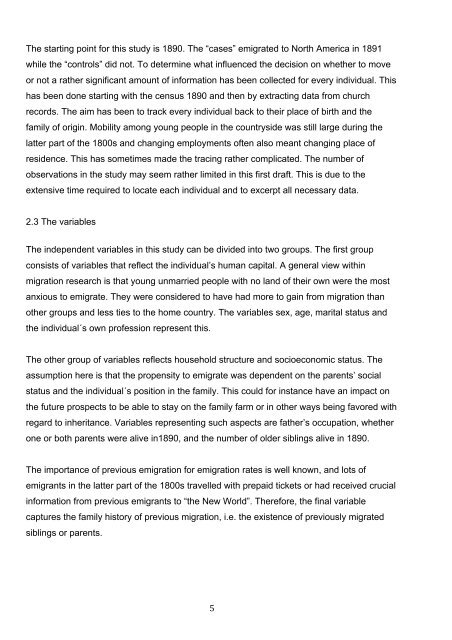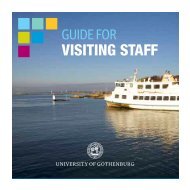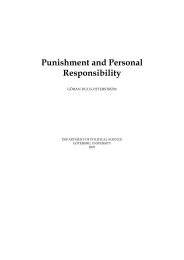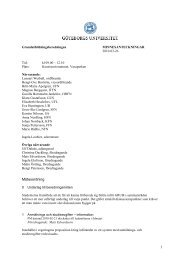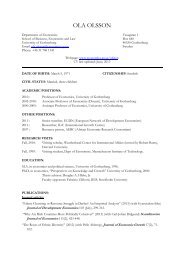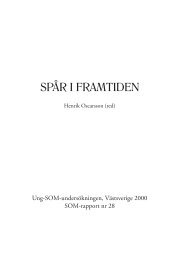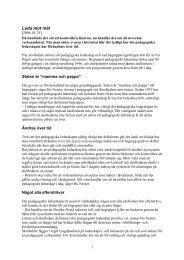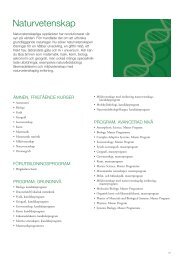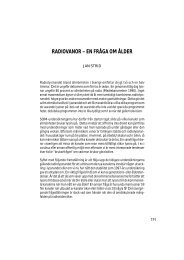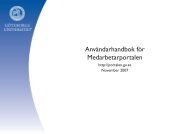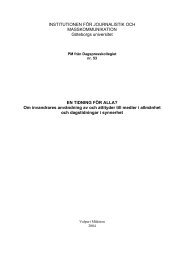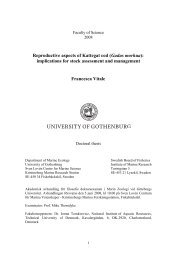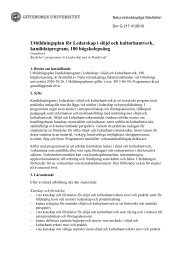Movers and stayers. Household context and emigration from ...
Movers and stayers. Household context and emigration from ...
Movers and stayers. Household context and emigration from ...
Create successful ePaper yourself
Turn your PDF publications into a flip-book with our unique Google optimized e-Paper software.
The starting point for this study is 1890. The “cases” emigrated to North America in 1891<br />
while the “controls” did not. To determine what influenced the decision on whether to move<br />
or not a rather significant amount of information has been collected for every individual. This<br />
has been done starting with the census 1890 <strong>and</strong> then by extracting data <strong>from</strong> church<br />
records. The aim has been to track every individual back to their place of birth <strong>and</strong> the<br />
family of origin. Mobility among young people in the countryside was still large during the<br />
latter part of the 1800s <strong>and</strong> changing employments often also meant changing place of<br />
residence. This has sometimes made the tracing rather complicated. The number of<br />
observations in the study may seem rather limited in this first draft. This is due to the<br />
extensive time required to locate each individual <strong>and</strong> to excerpt all necessary data.<br />
2.3 The variables<br />
The independent variables in this study can be divided into two groups. The first group<br />
consists of variables that reflect the individual’s human capital. A general view within<br />
migration research is that young unmarried people with no l<strong>and</strong> of their own were the most<br />
anxious to emigrate. They were considered to have had more to gain <strong>from</strong> migration than<br />
other groups <strong>and</strong> less ties to the home country. The variables sex, age, marital status <strong>and</strong><br />
the individual´s own profession represent this.<br />
The other group of variables reflects household structure <strong>and</strong> socioeconomic status. The<br />
assumption here is that the propensity to emigrate was dependent on the parents’ social<br />
status <strong>and</strong> the individual´s position in the family. This could for instance have an impact on<br />
the future prospects to be able to stay on the family farm or in other ways being favored with<br />
regard to inheritance. Variables representing such aspects are father’s occupation, whether<br />
one or both parents were alive in1890, <strong>and</strong> the number of older siblings alive in 1890.<br />
The importance of previous <strong>emigration</strong> for <strong>emigration</strong> rates is well known, <strong>and</strong> lots of<br />
emigrants in the latter part of the 1800s travelled with prepaid tickets or had received crucial<br />
information <strong>from</strong> previous emigrants to “the New World”. Therefore, the final variable<br />
captures the family history of previous migration, i.e. the existence of previously migrated<br />
siblings or parents.<br />
<br />
5


